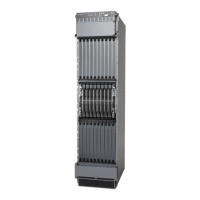CHAPTER 1
MX2020 System Overview and Architecture
IN THIS CHAPTER
MX2020 Universal Edge Router Overview | 3
MX Series Router Architecture | 4
MX2020 Chassis Description | 6
MX2020 Backplane Description | 12
MX2020 Component Redundancy | 13
MX2020 Field-Replaceable Units | 19
MX Series Router Packet Forwarding Engine (PFE) Architecture | 21
Line Cards Supported on MX Series Routers | 22
Ethernet Frame Counts and Statistics on MX Series Routers | 26
MX2020 Router Hardware Components and CLI Terminology | 26
Understanding Trio Layer 2 Feature Parity | 30
MX2020 Universal Edge Router Overview
The MX2020 Universal Routing Platform is an Ethernet-optimized router that provides both switching
and carrier-class Ethernet routing. The MX2020 router supports service provider core, converged core
and edge, and edge applications, and enables a wide range of business and residential and services, including
high-speed transport and VPN services, next-generation broadband multiplay services, and high-volume
Internet data center internetworking.
The MX2020 chassis provides redundancy and resiliency. All major hardware components including the
power system, the cooling system, the control board and the switch fabrics are fully redundant.
The MX2020 router is 45 rack units (U) tall. One router can be installed in a four-post rack or cabinet. The
MX2020 router has 20 dedicated line card slots for a maximum of 20 Modular Port Concentrators (MPCs).
Up to two Modular Interface Cards (MICs) can be installed in each MPC for a total of 40 MICs when fully
populated. The host subsystem consists of two Control Boards with Routing Engines (CB-REs) and eight
Switch Fabric Boards (SFBs).
For a list of the supported MPCs, and MICs, see the MX Series Interface Module Reference.
3

